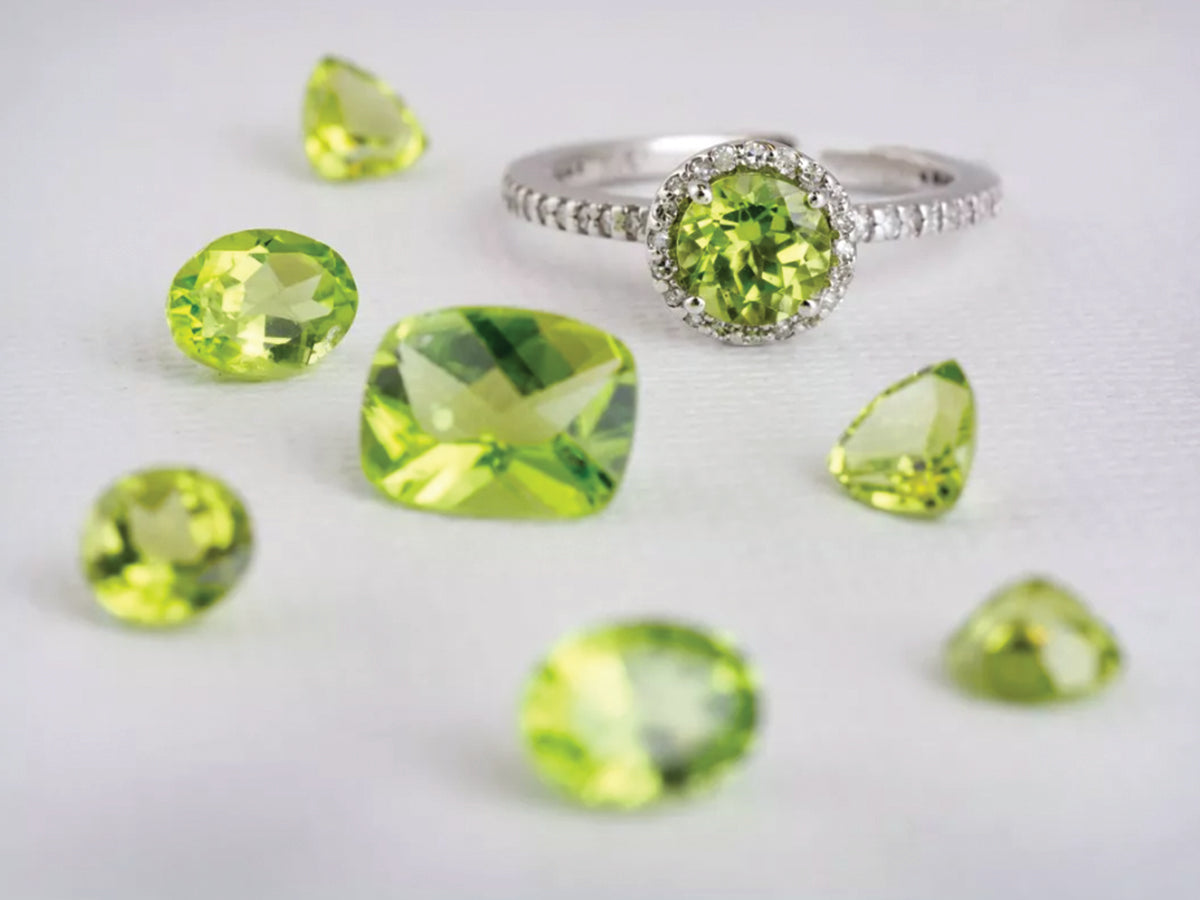Peridot jewelry dates back as far as the second millennium BC. These ancient Egyptian gemstones came from deposits on a small volcanic island in the Red Sea called Topazios, now known as St. John’s Island or Zabargad.
Though peridot is widely recognized by its brilliant lime green glow, the origin of this gemstone’s name is unclear. Most scholars agree that the word “peridot” is derived from the Arabic faridat, which means “gem,” but some believe it’s rooted in the Greek word peridona, meaning “giving plenty.” Perhaps that’s why peridot was, according to lore, associated with prosperity and good fortune.
Peridot is the rare gem-quality variety of the common mineral olivine, which forms deep inside the Earth’s mantle and is brought to the surface by volcanoes. In Hawaii, peridot once symbolized the tears of Pele, the volcano goddess of fire who controls the flow of lava. Rarely, peridot is also found inside meteorites.
Peridot’s signature green color comes from the composition of the mineral itself—rather than from trace impurities, as with many gemstones. That’s why this is one of few gemstones that only comes in one color, though shades may vary from yellowish-green to olive to brownish-green, depending how much iron is present.
Though it is known as “the Evening Emerald” because its sparkling green hue, peridot looks good any time of day.
Most of the world’s peridot supply comes from the San Carlos Reservation in Arizona. Other sources are China, Myanmar, Pakistan, and Africa.
Peridot only measures 6.5 to 7 on the Mohs scale, so while the raw crystal is prone to cracking during cutting, the finished gemstones are robust and easy to wear...making them perfect for jewelry! Did I get your creative wheels turning? What would you like to create with this beautiful green gem? I'm here to help you put Your Story. Set in Stone.








